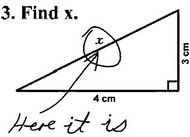In which I learn a new way to treat a donkey hoof abscess
 It's been almost eight years I've had Jethro the donkey now. (Left, picture of him when I was just buying him out in Iredell County.)
It's been almost eight years I've had Jethro the donkey now. (Left, picture of him when I was just buying him out in Iredell County.)I've learned a lot over this time and Jethro has become far more mannerly.
One thing that's worse is, he gets hoof abscesses now. He and his buddy Hector have churned up the mud along their fence line and they stand in that muck most of the day watching us and waiting for treats. It's no use moving them, they just do the same thing in the new place. I got a concrete pad poured in the shed where we feed them but they mostly just want to stand by their fence and beg for corn cobs and banana peels.
Donkeys are so strong, it's not the fence per se but their general lack of imagination that holds them back. Jethro's lack of imagination failed momentarily about a week or two ago and, under cover of darkness, by finding and pushing on a plank that was nailed, not screwed, into its post he escaped. When I woke up in the morning and went out on my balcony there he was in the front yard, eating the green grass enthusiastically and with a big happy round belly.
Two weeks later, he was very ill. He walked like he had arthritis, each foot shakily planted on the ground. Our new vets, Triangle Equine, diagnosed laminitis (I gather this is like the first stage of foundering) stemming from his one night of over indulgence! They said horses and ponies founder almost immediately after a gorge, but that in donkeys it can be delayed up to a month! And by the time they got here he had also developed a nasty hoof abscess.
They prescribed "Bute" (phenylbutazone) to treat both the laminitis and the abscess. But what I really wanted to share was the way they now protect the donkey hoof over the week or so while an abscess is draining.
Previously I was told to soak the foot in a bath of epsom salts and then put the clean foot into a booty made of a feed bag and tape it on. That was hard. Jethro was willing to keep his foot in the epsom salts bath only as long as I was feeding him sweet feed. When I stopped he immediately took his hoof out and put it squarely down into the muck again.
 Here's what the new vets do: They make a pad of duct tape, like this, each piece overlapping the one before. Then they do a second, perpendicular layer on top of that one.
Here's what the new vets do: They make a pad of duct tape, like this, each piece overlapping the one before. Then they do a second, perpendicular layer on top of that one.They take an already-folded-in-half disposable baby diaper (newborn size) and fold it in half again. That's about the size of Jethro's hoof. They put it in the middle of the duct tape.
 Then they take one of these Animalintex hoof poultices, trim it a bit to the size of the bottom of his hoof, soak it briefly in water, and put it on top of folded diaper. Then you mash that whole mess up onto the hoof and pull the duct tape mat up and around the hoof, getting the sticky part surrounding your poultice to stick to the sides of the hoof. And then take the roll of duct tape and wrap madly till the whole thing is trapped securely in place. Do this every day till it's not necessary any more (your vet will tell you I guess).
Then they take one of these Animalintex hoof poultices, trim it a bit to the size of the bottom of his hoof, soak it briefly in water, and put it on top of folded diaper. Then you mash that whole mess up onto the hoof and pull the duct tape mat up and around the hoof, getting the sticky part surrounding your poultice to stick to the sides of the hoof. And then take the roll of duct tape and wrap madly till the whole thing is trapped securely in place. Do this every day till it's not necessary any more (your vet will tell you I guess).They explained that the pad contains epsom salts and when you wet it it will draw the mooky stuff down and out and keep the hoof clean while it's healing.
I just thought, in case your donkey has a hoof abscess, you'd want to know about this. Two days later he is walking just fine.
Labels: donkey



 A few of my daughter
Melina's great posts:
A few of my daughter
Melina's great posts:








1 Comments:
I SO love your animal stories. Thanks for posting!
Post a Comment
<< Home